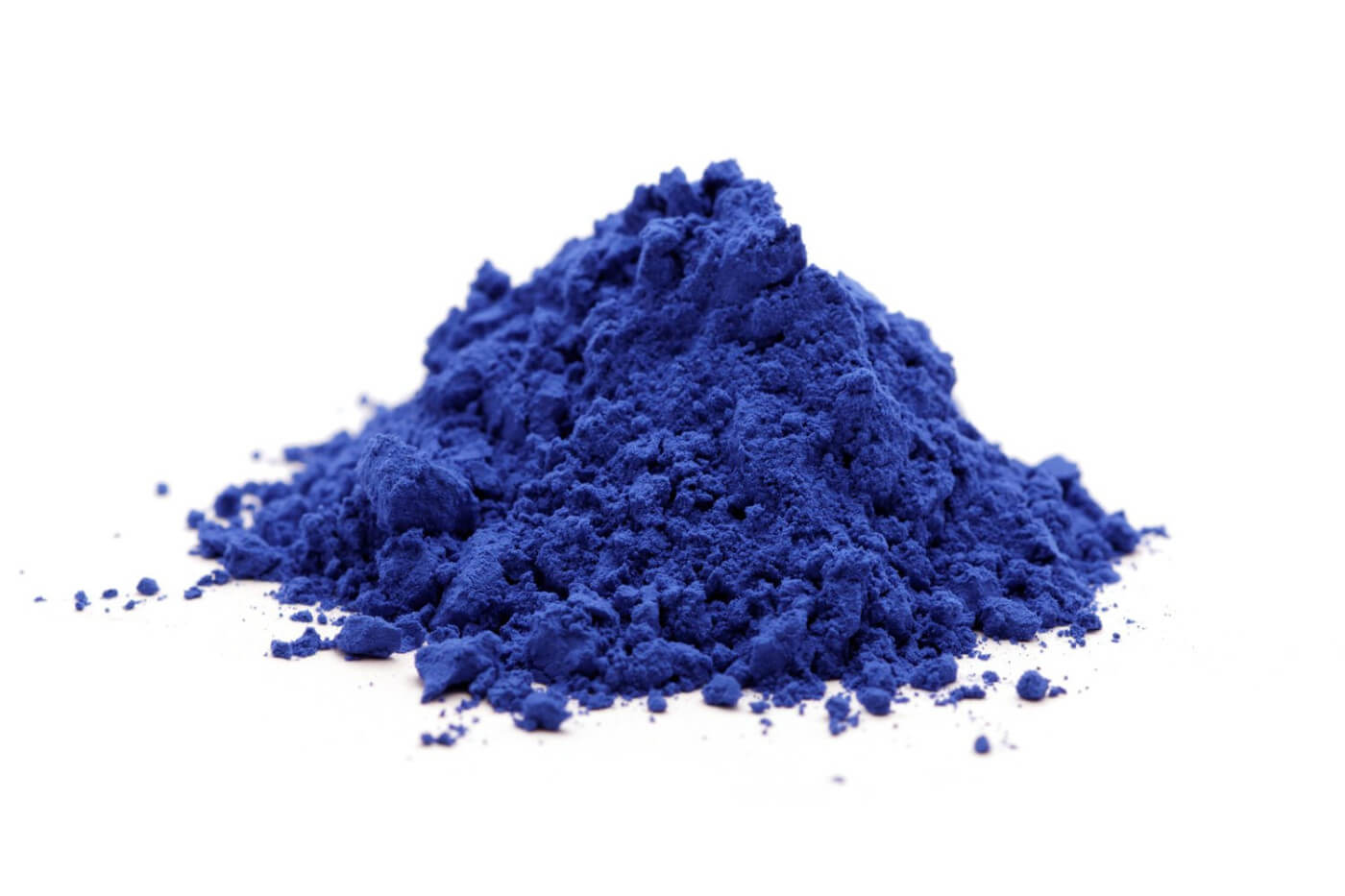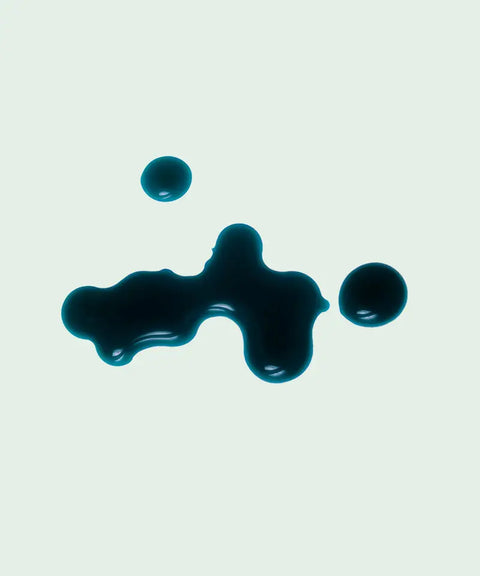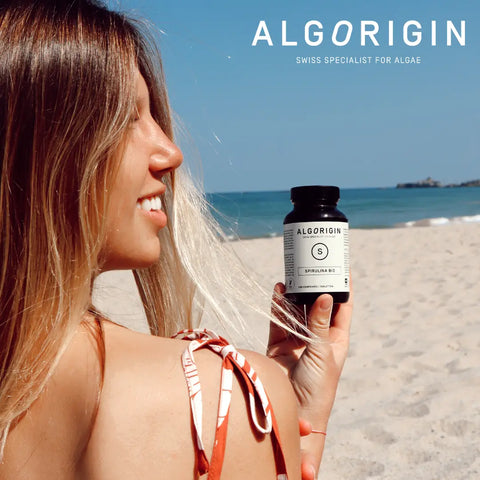Spirulina blue has many benefits and advantages for the body. We will explain everything to you in this article. Food supplements are products that aim to supplement the diet and provide essential nutrients that may be lacking in the daily diet. Among the popular dietary supplements is blue algae, also known as spirulina. Spirulina is a microscopic cyanobacteria that is grown in ponds or lakes. It is considered a superfood due to its exceptional nutrient content, especially proteins, vitamins and minerals. It is also rich in antioxidants and essential fatty acids.
There spirulina may be particularly helpful for people who are malnourished or have vitamin and mineral deficiencies. It is also recommended for vegetarians and vegans, who may have difficulty getting enough protein and vitamin B12 in their diet. It may also be beneficial for regulating cholesterol and strengthening the immune system.
Spirulina can be purchased in powder, flake, or tablet form. It is usually sold in dried form, but it can also be purchased fresh in some cases. It is recommended to consume between 2 and 6 grams of spirulina per day, depending on the needs and goals of each individual. It is important to choose a quality spirulina and follow the manufacturer's recommendations for dosage. Spirulina can be consumed daily, but it is recommended to take regular breaks to avoid overconsumption.
What is Blue Spirulina?
Spirulina is a microscopic blue-green algae that belongs to the cyanobacteria family. It is very rich in nutrients, especially proteins, vitamins and minerals. It is also an excellent source of essential amino acids, that is, those that our body cannot produce by itself and must be provided by food.
There is also organic spirulina, which is grown without the use of chemicals or pesticides. It is often grown in natural ponds or lakes, and is certified organic by organizations such as Ecocert. Organic spirulina can be an interesting option for those who want to consume high-quality and environmentally friendly foods.
Blue Spirulina: What is it made of?
L' spirulina algae is also very rich in chlorophyll, a green pigment that gives it its antioxidant properties. It also contains phycocyanin, a blue pigment that has anti-inflammatory properties. In addition to its exceptional nutritional properties, spirulina is also very beneficial for general health. It can strengthen the immune system, improve digestion and reduce the risk of cardiovascular disease. Spirulina is rich in protein, vitamins and minerals, as well as antioxidants. It is also rich in essential fatty acids, especially omega-3 and omega-6. It can be especially helpful for people with anemia or nutrient deficiencies, as well as pregnant women who need extra nutrients.
Here are some of the nutrients found in blue spirulina:
Protein: Blue spirulina contains approximately 65-71% protein by weight, making it an excellent source of plant-based protein.It also contains a wide variety of essential amino acids, which are those that our body cannot produce on its own and must be supplied through diet.
Vitamins: Blue spirulina is an excellent source of vitamins, especially B vitamins, which are important for metabolism and the nervous system. It also contains vitamin C, vitamin E and vitamin A (as beta-carotene).
Minerals: Blue spirulina is rich in minerals, including iron, calcium, magnesium and phosphorus. It also contains many trace minerals, such as zinc, copper and manganese.
Fatty Acids: Blue spirulina also contains good amounts of essential fatty acids, such as linolenic acid (omega-3) and linoleic acid (omega-6). These fatty acids are important for cardiovascular health and brain function.
- Other nutrients: Blue spirulina also contains chlorophyll, a green pigment that gives it its antioxidant properties. It also contains phycocyanin, a blue pigment that has anti-inflammatory properties. It is also rich in carotenoids, plant pigments that play an important role in protecting against free radicals.
Learn everything you need to know about the composition of organic spirulina !

How is blue spirulina consumed?
Spirulina can be consumed in a variety of ways, depending on individual preferences. It can be added to smoothies, juices, or even salads to increase its nutritional value. It can also be mixed with water or other liquid to create a nutritional drink.
Spirulina can be consumed in powder, flake or capsule form. It is often used as a dietary supplement to help fill nutrient deficiencies and to improve vitality and tone. It is particularly appreciated by athletes and those following a vegetarian or vegan diet, as it provides a source of complete protein and essential nutrients.
Blue spirulina can be consumed in different ways, depending on individual preferences. Here are some examples of ways to consume blue spirulina:
Powdered form: Blue spirulina can be purchased in powdered form, which can be added to smoothies, juices, or even salads to increase its nutritional value. It can also be mixed with water or other liquid to create a nutritional drink.
In flake form: Blue spirulina can also be purchased in flake form, which can be added to smoothies or other foods to increase their nutritional value. Spirulina flakes are also convenient to use, as they can be easily mixed into foods and dissolved in liquids.
In tablet or capsule form: Blue spirulina can be purchased in tablet or capsule form, which are very convenient to swallow. These forms of spirulina are particularly appreciated by people who do not like the taste of powder or who prefer a more convenient way of consumption.
It is recommended to consume between 2 and 6 grams of spirulina per day, depending on the needs and goals of each person. It is important to choose a quality spirulina and follow the manufacturer's recommendations for dosage.Spirulina can be consumed daily, but it is recommended to take regular breaks to avoid overconsumption. It is also important to drink enough water when consuming spirulina, as it can contribute to dehydration.
Learn more : How to recognize high quality spirulina?
Blue spirulina: What are its benefits?
It is important to choose a quality spirulina to fully benefit from its benefits. It is recommended to favor a spirulina cultivated in fresh water and produced according to quality methods, such as organic farming or artisanal aquaculture. It is also important to ensure that the spirulina does not contain heavy metals or toxins, which can be present in certain sources of algae.
Blue spirulina is considered a superfood, due to its exceptional nutritional properties and health benefits. Here are some examples of the benefits of blue spirulina:
Boosts the immune system: Blue spirulina is rich in vitamins and minerals that can help boost the immune system. It also contains phycocyanin , a blue pigment that has anti-inflammatory properties and can help strengthen the immune system.
Improves digestion: Blue spirulina contains chlorophyll, a green pigment that can help improve digestion and protect the intestinal mucosa. It may also be beneficial for people suffering from constipation or diarrhea.
Reduces the risk of cardiovascular disease: Blue spirulina is rich in essential fatty acids, including linolenic acid (omega-3) and linoleic acid (omega-6). These fatty acids are important for cardiovascular health and may help reduce the risk of heart disease and stroke.
Improves Skin Health: Blue spirulina is rich in vitamins and minerals that can benefit skin health. It also contains antioxidants that can help protect the skin from free radicals and fight premature aging.
Helps with weight loss: Blue spirulina is rich in protein and essential nutrients, but it is low in calories. It can be useful to help with weight loss by replacing diets.
In summary, spirulina is a highly nutritious superfood rich in essential nutrients. It can be consumed in various forms and is particularly beneficial for strengthening the immune system and improving digestion.
Conclusion
Blue spirulina is rich in protein, vitamins and minerals, as well as antioxidants. It is also rich in essential fatty acids, particularly omega-3 and omega-6. It can be particularly useful for improving overall health and strengthening immune defenses.
Blue spirulina can be consumed in different forms, including powder, flakes, or tablets. It is usually sold in dried form, but it can also be purchased fresh in some cases. It is recommended to consume between 2 and 6 grams of blue spirulina per day, depending on the needs and goals of each individual. It is important to choose a quality spirulina and to follow the manufacturer's recommendations for dosage.Blue spirulina can be consumed daily, but it is recommended to take regular breaks to avoid overconsumption.
There is also organic blue spirulina, which is grown without the use of chemicals or pesticides. It is often grown in natural ponds or lakes, and can be a great option for those looking to consume high-quality, environmentally friendly foods. It is important to note that blue spirulina can have side effects for some people. For example, it can cause headaches or nausea in some people. It is recommended to start with low doses and monitor your body's reactions before gradually increasing the dose.




